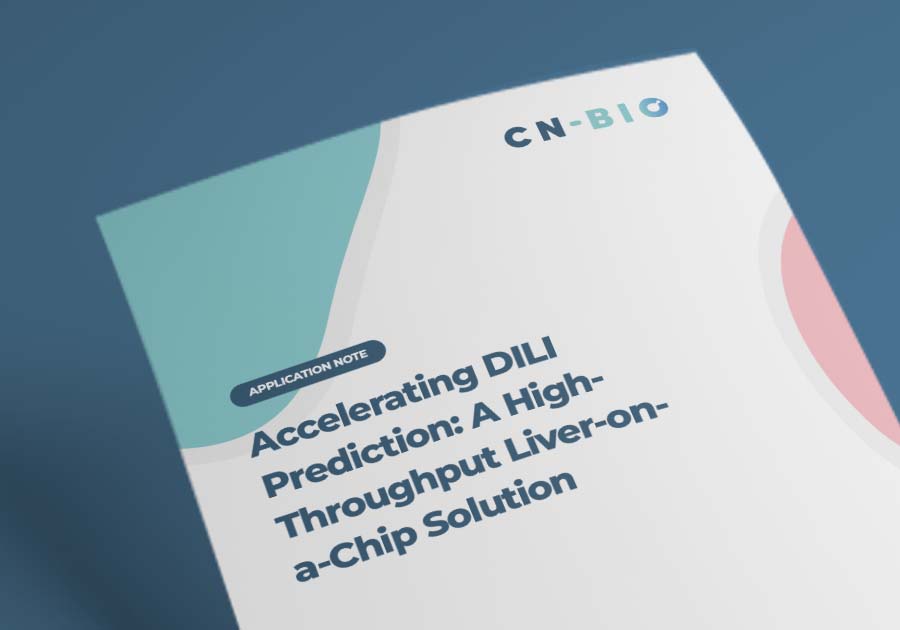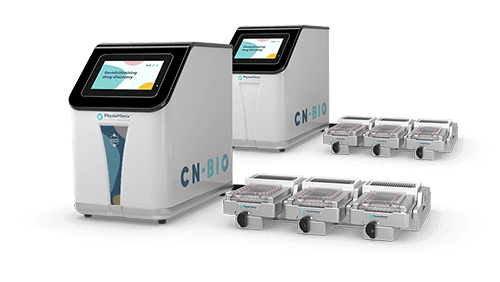Resource > Application notes >
Accelerating DILI Prediction: A High-Throughput Liver-on-a-Chip Solution
Filed under: DILI and Safety toxicology

Video content if present
Until now, there has been an inverse relationship between the high human-relevance required to predict human outcomes and throughput capacity. This has limited the application of Liver-on-a-chip, or Liver microphysiological systems (MPS), to smaller-scale investigative toxicity studies.
However, adopting high-throughput liver-on-a-chip earlier in the pipeline, at the lead optimization phase, provides significant advantages. Its data-rich analyses can be used to understand the root cause of Drug-induced liver injury (DILI) to facilitate early project termination or flawed drug recovery. Plus, by reducing the number of molecules passing through into preclinical testing, high-throughput Liver-on-a-chip supports a reduction in the number of animals required, contributing to 3Rs efforts, and cost savings.
Our Application Note presents a new high-throughput Liver-on-a-chip solution that accelerates DILI prediction within lead optimization – the PhysioMimix® Single-organ Higher throughput (HT) System and Multi-chip Liver-48 plates. With 288 replicates/ run capacity, our solution enables you to:
- Screen more drug candidates
- Include more replicates
- Test over a broader range of concentrations
- Include in-plate positive and negative controls for data normalization
- Explore a wider range of conditions, or primary cell donors
- Reduce cost/test
Delivering equivalent tissue formation and functionality (versus our original Liver-12 plate), plus data that meets the IQ MPS Consortium mandated functionality requirements for liver tissue in DILI assessment, this high-throughput Liver-on-a-chip case study results demonstrate the system’s applicability for robust and earlier DILI risk assessment, bringing a new dimension of human relevance to this key drug discovery phase.
Two individual donors were used to understand the miniaturized model’s sensitivity and ability to elucidate donor-dependent responses to Chlorpromazine, a well-known cause of acute cholestatic liver injury in some patients. The Liver-48 plate was subsequently characterized using a pair of tool compounds recommended by the IQ MPS Consortium – Troglitazone (high DILI concern) and Pioglitazone (low DILI concern).
The PhysioMimix Liver-on-a-chip (Liver MPS) combines primary human hepatocyte (PHH) and Kupffer cells (KCs) to form microtissues within a perfused 3D collagen-coated scaffold. The model is used in the PhysioMimix DILI assay where it provides large amounts of recoverable material (media and tissue) for in-depth analysis to understand biotransformation and mechanisms of human toxicity.
The assay delivers exceptional performance as exemplified in a prior study using 13 reference compounds from the IQ MPS Consortium DILI validation set which delivered 100% sensitivity, 85% accuracy, and 100% precision in the Liver-12 plate and has been recognized by the U.S. FDA CDER (Centre for Drug Evaluation and Research) group, who cited superior performance versus standard approaches in the first publication between OOC provider and regulator.


